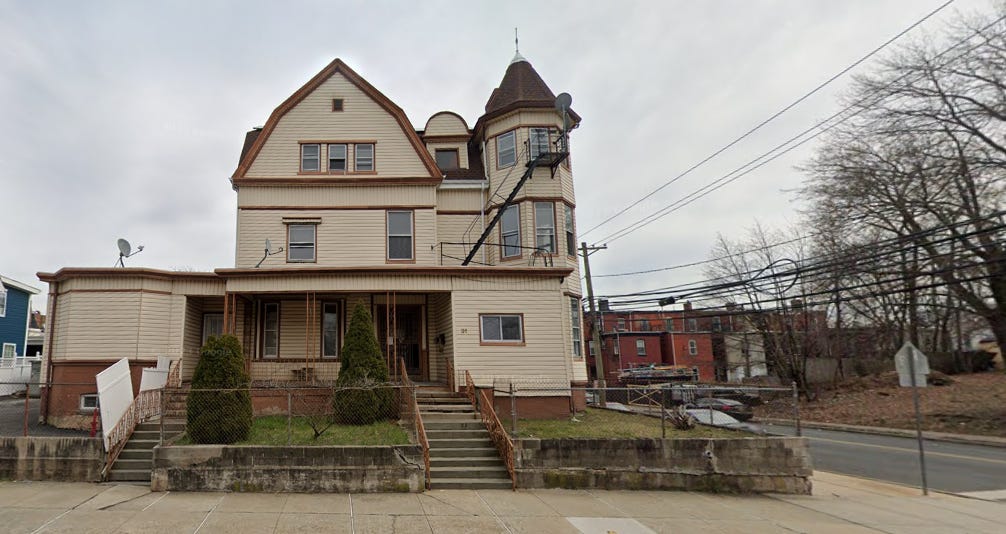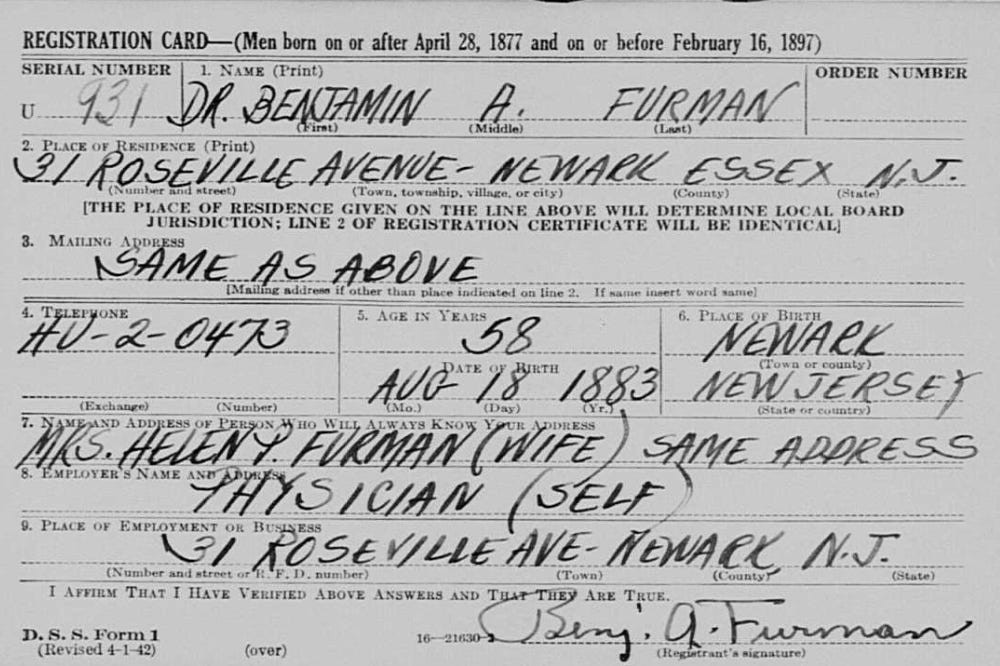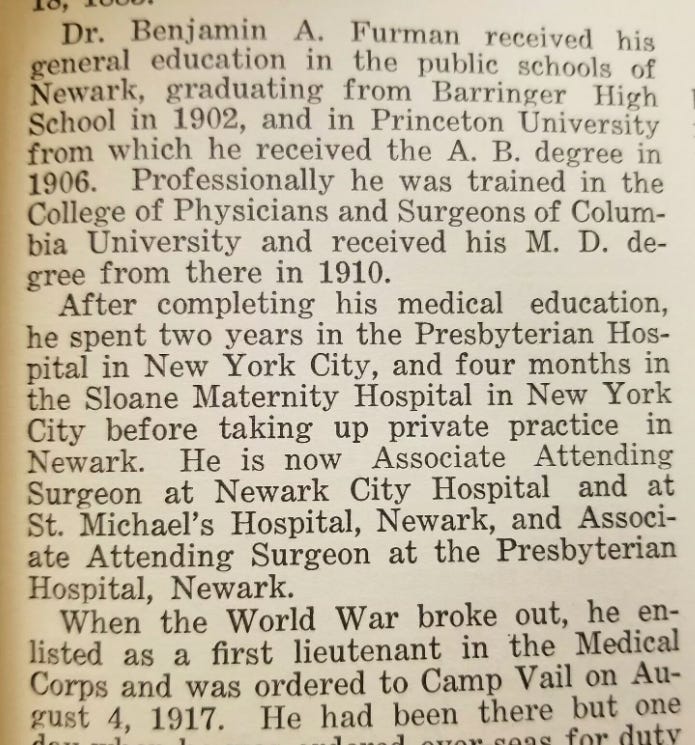Officially, Jay Reid was Never Born
Notations on long form birth certificate offer clues into possible manipulation
Clarity around the Jay Reid's birth certificate came in response to requests submitted to the New Jersey state archives for official copies of two long form birth certificates.
The first request, for the birth certificate belonging to Jay Herbert Reid Jr., born July 8, 1915 in Newark, New Jersey, yielded no results. As far as the state is concerned, no one by that name was born on that day in Newark.
The second request, for the birth certificate belonging to Herbert W. Reed Jr., born July 8, 1915 in Newark, New Jersey, returned the long form birth certificate matching the certified copy found among Jay’s professional papers after his death.
I asked the archivist who retrieved the birth certificate if it was possible that the version she sent me could have been inserted into the official record on or around 1950. The archivist responded:
From the format of the certificate, it appears to have been filed in 1915. If it had been filed in 1950, the form used would have been quite different.
In addition, if it had been filed at a later date, the numbering would be different. The certificates from 1915 were alphabetized by name and then bound into volumes with a name range. Within each volume a page number was stamped in the upper right corner - in this case 738. If a record was filed many years later it would have been pasted into the volume and the number would be appended by an M.
From our experiences with these records we cannot support your belief that it is a later addition to the births of 1915 based the form and the page numbering.
Many certificates have notations that do not relate to the eventual filing with the state.
In my reply, I pressed the archivist on the issue, citing much of the documentation that I presented in previous posts. I asserted my belief that the document she sent me was likely a forgery. While the archivist disagreed with the forgery hypothesis, that person did provide further context:
We are overwhelmed by your suggestions.
All we can say if that the birth record we provided for you was in the 1915 birth certificates that were bound by Vital Statistics at some point soon after 1915 and were disbound in the 1980s for the purpose of being microfilmed. As we stated before if a record was inserted it was marked with an M after the page number. The volumes were not disbound in the 1950s.
As the copies you have were generated by the City of Newark's records, we cannot speak to those records.
It is possible that the 1915 birth certification copies generated by the City of Newark were used to cloud a person's background. That does not affect the record that was filed in 1915 that is now in our records. It is like a person taking the identity of a child who died. The record is correctly filed, but much later used for a different person.
We wish you luck in trying to untangle this knot, but there is little more we can add.
Takeaways from the archivist
The archivist who fulfilled the birth certificate request, provided a number of really useful tidbits:
The 1915 form was different from the 1950 form, and this birth certificate was on the 1915 form.
If the record had been amended, the protocol was to paste the modified form into the bounded book and add an “M” after the number in the top right corner (738 in this case).
It is not uncommon for birth certificates to have notations unrelated “to the eventual filing with the state.”
The original bounded birth certificates were unbound in the 1980s in order to be microfilmed.
The volumes were not officially unbound in the 1950s.
The notion that a birth certificate copy could have been used to “cloud a person’s background” is not foreign to the those who work in the archive.
It is important to note that the archivist described only official procedures. The archivist did not confirm, deny, or even address the possibility of unofficial alterations made at the direction of a federal agency nearly 75 years ago.
A detailed examination of the long form birth certificate
There are numerous intriguing clues contained in the long form birth certificate. At a high level, the following are noteworthy:
The printed and handwritten text are both a bit blurry, likely, but not certainly, a result of the microfilming process.
There are numerous smudge marks on the ink.
There are 3 sets of handwriting:
The main text
“414” written at the top of the page
The notation in the bottom right corner of the page
Most of the field entries not included in the certified copy line up with Jay’s information:
Father’s age looks like “34”, but it is “31”, and that is the correct age of Jay Sr.
Father’s line of work, insurance, is correct
Mother’s age, 26, is correct
Number of children in the marriage (1) and number of children still living (1) both match Jay’s records
AgNO3 1% refers to silver nitrate, which was applied to babies’ eyes at birth.
The use of silver nitrate as prophylaxis for neonatal ophthalmia was instituted in the late 1800s to prevent the devastating effects of neonatal ocular infection with Neisseria gonorrhoeae. At that time – during the pre-antibiotic era – many countries made such prophylaxis mandatory by law.
So far, so good. The mismatched name and father’s name are holdovers from the certified copy, but all the other information about the birth matches what we know about Jay.
Oddities
That leaves three things that don’t quite make sense.
First, in the top center of the page, “414” is handwritten on the diagonal. I do not know what this means, but I am inclined to believe it is an unrelated notation, the likes of which archivist described.
Second, in the top right corner, in the section where “738” is stamped, there appears to have been something else also written or stamped, but subsequently erased.

This marking may or may not be something important.
The third, and what I believe to be the most important, oddity on the birth certificate is the notation in the bottom right corner of the birth certificate.
I asked ChatGPT to read the birth certificate and posit suggestions for what the notation said. After some back and forth, I determined that it most likely says 31 Roseville Ave B.B. 136.
B.B. likely stands for block and box, or what is today called a post office (P.O.) box. The abbreviation B.B. was apparently used sometimes in older address formats.

In 1950, according to the U.S. Census conducted that year, Dr. Benjamin A. Furman, a surgeon of some renown, lived at 31 Roseville Ave. Dr. Furman also listed that address when he registered for the draft in 1942.
The University of Michigan houses a collection of Dr. Furman’s correspondences during his WWI service, and the collection’s website includes this bio (emphasis added):
Benjamin Applegate Furman was born in Newark, New Jersey, on August 18, 1883, the son of John Applegate Furman and Emma Conover Ayres. He had four siblings: Edna, Robert, Edith, and John, Jr. After receiving his bachelor's degree from Princeton University in 1906, he earned a medical degree from Columbia University in 1910. He worked for Presbyterian Hospital in Newark, New Jersey, from 1914-1963, and concurrently owned a private practice. Furman joined the United States Army before August 1917, served as a surgeon with the 407th Telegraph Battalion and the 2nd Evacuation Hospital in France between August 1917 and April 1919, and was honorably discharged as a first lieutenant. On September 27, 1919, he married Helen Mary Pryor; they had two sons, John Pryor and Robert Ayres. Benjamin A. Furman died on June 22, 1967.
That bio generally aligns with a published piece written in Dr. Furman’s lifetime that is currently listed for sale on Ebay.
Dr. Furman had two sons: John Pryor and Robert Ayres. A1999 obituary for John, known as Jack, includes a few important pieces of information (emphasis added):
Jack prepared at Andover, majored in the SPIA, graduated with highest honors, and was elected to Phi Beta Kappa. He was also a member of Elm Club. During the war he worked for the government, in Washington, in the Office of Price Administration and the Office of Dependency Benefits. In 1946 he earned his LLD from Yale, in two years. Returning to Washington, he worked for the State Dept. as an attorney/economist, which took him to Berlin during the blockade. He was involved in the Austrian treaty and the postwar settlement with Germany. Before starting his own practice, he spent several more years with the State Dept. and was general manager of Foster Associates (consulting economist attorneys), after earning an MA in economics at American U.
Robert’s obituary, from 2002, includes the following pertinent tidbits (emphasis added):
Born in Newark, N.J., he captained the basketball team at Phillips Exeter Academy and entered Princeton in June 1942. Son of Benjamin 1906, nephew of John '13, and brother of John '42, Bob played football, basketball, and baseball, leaving for the Army in Nov. 1943. He attended Columbia College of Physicians and Surgeons, from which he graduated in June 1947. After two years as an Air Force doctor, he studied psychiatry in Cleveland, where he later established the Center for Research in Child Development. Together with his wife of 48 years, the late Erna Furman of Vienna, Austria, he developed the The Hannah Perkins Center for psychiatric treatment for young children.
Areas in bold represent possible friction points with Jay Reid or one of his close associates and will require further investigation.
Keen observers will note that the obituaries for Dr. Benjamin Furman’s sons were both published in the Princeton Alumni Weekly. From experience, such obituaries can be very selective in what they do, and do not, mention about a given person’s career.
Value of the long form birth certificate
A long form birth certificate is required in order to get a U.S. passport. We know that Jay had a passport issued in 1973 in his correct name, “Jay Herbert Reid”.
My hypothesis is that Jay used a correct version of his long form birth certificate to get his first passport, and then used expired passports to get subsequent new ones.
With a passport and driver’s license, Jay would have had no real need for a long form birth certificate.
I think the correct birth certificate was pulled from the records on or around 1950 and replaced with a forgery, the Herbert W. Reed Jr. birth certificate.
Dr. Furman’s address may indicate he played a role in requesting, directing, or somehow facilitating the work of creating a forgery and having it entered into the official record.
Proving that this birth certificate is a forgery will require more documentation.
Pinpointing Dr. Furman’s role in all this, if he had any role at all, will require much more investigation.
The long form birth certificate does nail down one important fact: there is no evidence that a man named Jay Herbert Reid Jr. was born on July 8, 1915 in Newark, New Jersey.
If such a man were born, bearing that name in that time and place, he has been completely erased from the official record.






